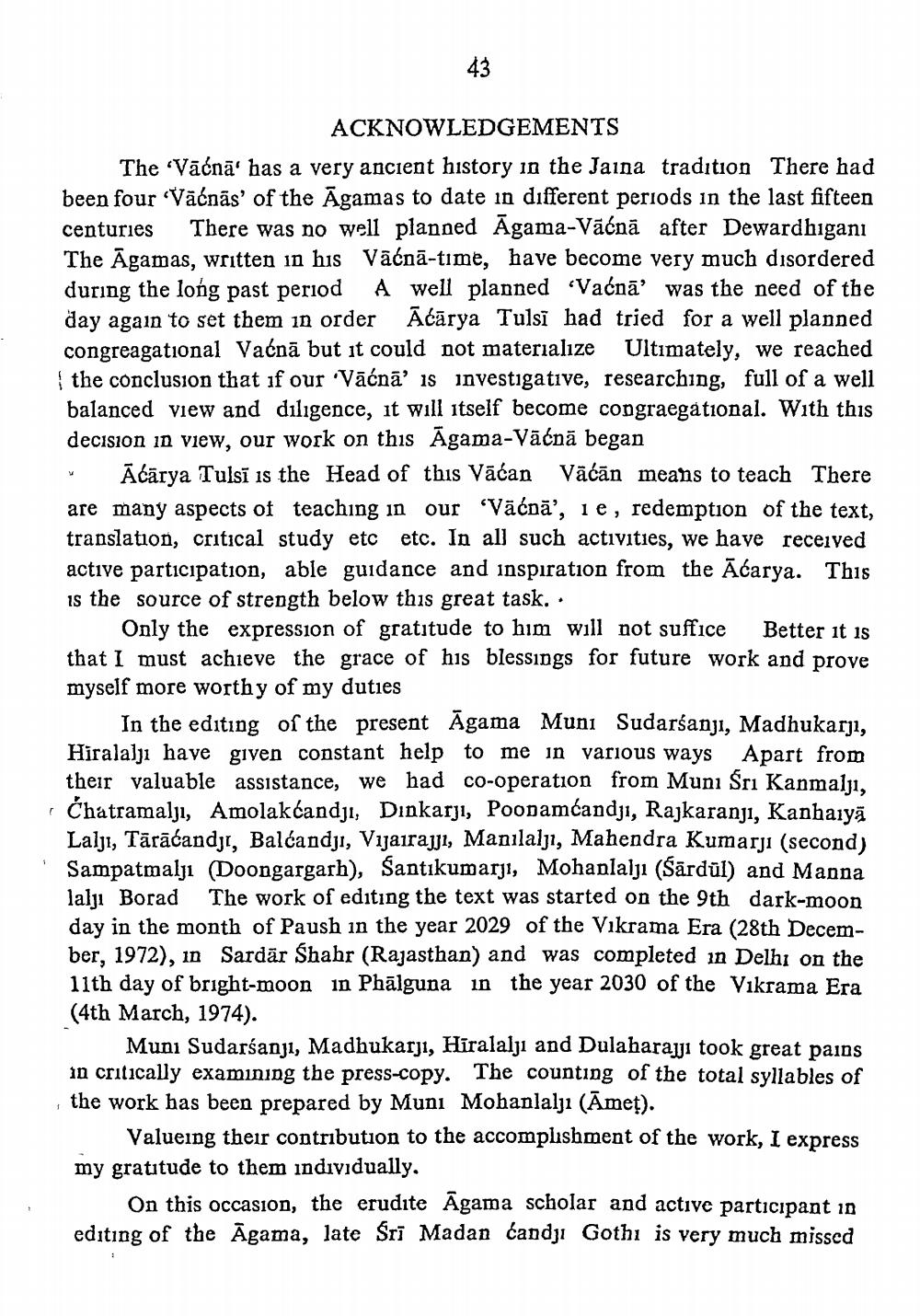________________
333333
43
ACKNOWLEDGEMENTS
centuries
The 'Vaćna' has a very ancient history in the Jaina tradition There had been four 'Vaćnas' of the Agamas to date in different periods in the last fifteen There was no well planned Agama-Vaćna after Dewardhiganı The Agamas, written in his Vaćna-time, have become very much disordered during the long past period A well planned 'Vaćna' was the need of the day again to set them in order Acarya Tulsi had tried for a well planned congreagational Vaćna but it could not materialize Ultimately, we reached {the conclusion that if our 'Vaćna' is investigative, researching, full of a well balanced view and diligence, it will itself become congraegational. With this decision in view, our work on this Agama-Vaćna began
น
Acarya Tulsi is the Head of this Vāćan Vāćan means to teach There are many aspects of teaching in our 'Väćna', ie, redemption of the text, translation, critical study etc etc. In all such activities, we have received active participation, able guidance and inspiration from the Acarya. This is the source of strength below this great task..
Only the expression of gratitude to him will not suffice Better it is that I must achieve the grace of his blessings for future work and prove myself more worthy of my duties
In the editing of the present Agama Muni Sudarśanji, Madhukarji, Hiralalji have given constant help to me in various ways Apart from their valuable assistance, we had co-operation from Muni Sri Kanmalji, Chatramalji, Amolakćandjı, Dinkarji, Poonamćandji, Rajkaranji, Kanhaiya Lalji, Tārāćandji, Balćandji, Vijairajji, Manilalji, Mahendra Kumarji (second) Sampatmalji (Doongargarh), Santikumarji, Mohanlalji (Śārdul) and Manna lalji Borad The work of editing the text was started on the 9th dark-moon day in the month of Paush in the year 2029 of the Vikrama Era (28th December, 1972), in Sardar Shahr (Rajasthan) and was completed in Delhi on the 11th day of bright-moon in Phalguna in the year 2030 of the Vikrama Era (4th March, 1974).
Muni Sudarśanji, Madhukarji, Hiralalji and Dulaharajji took great pains in critically examining the press-copy. The counting of the total syllables of the work has been prepared by Muni Mohanlaljı (Amet).
Valueing their contribution to the accomplishment of the work, I express my gratitude to them individually.
On this occasion, the erudite Agama scholar and active participant in editing of the Agama, late Śrī Madan candy Gothi is very much missed




